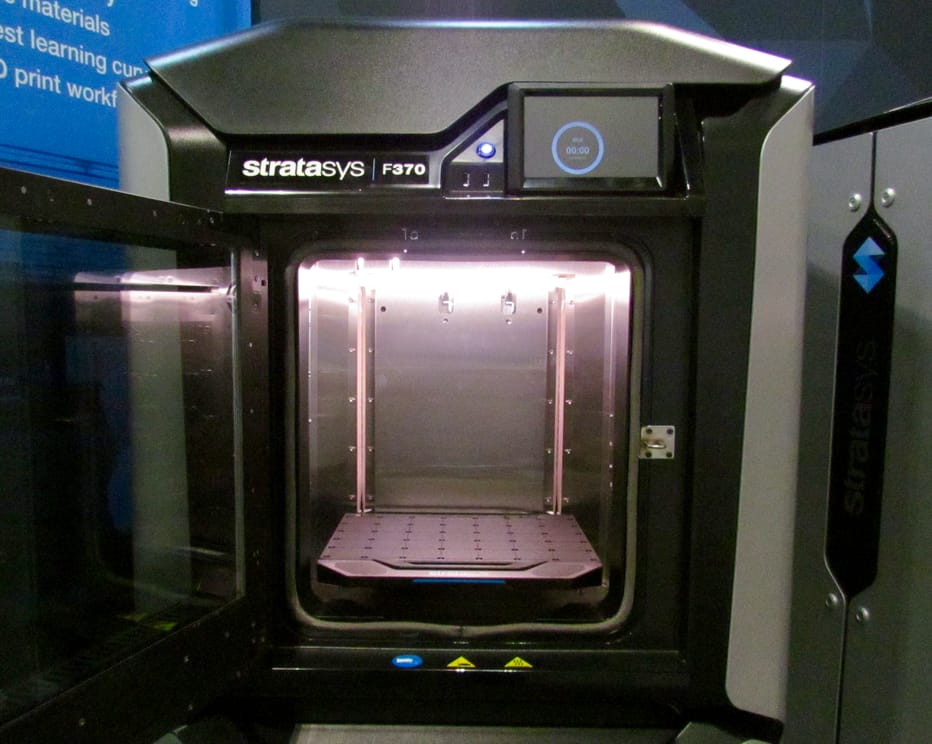
Yesterday I described the details of the new Stratasys F123 line of prototyping 3D printers. Today let’s look at what it means.
If you missed the announcement, Stratasys announced an entirely new line of commercial 3D printers designed specifically for prototyping: they are not considered “production” machines. The F123 line includes three models of differing build sizes that can reliably 3D print in a variety of useful engineering materials.
The machines are designed to be significantly more reliable and include substantially improved operational characteristics, making it not only easier to use, but also much more efficient.
As with any important announcement, there are those who gain and others who may lose as a result.
For existing clients: Those folks operating older Stratasys equipment, such as the now-discontinued Dimension line, will certainly have the opportunity to upgrade their now-aging equipment for a much more efficient and effective option. For some clients, this could be quite profitable as the efficiency capabilities would enable existing labor levels to get more done.
For machine sellers: For those organizations buying and selling used 3D printer equipment, holding Dimension equipment may have just been not a great idea, as I suspect the price of used Dimension equipment may drop, since more interest will be focused on the new F123 series.
For designers: A key target for Stratasys in this announcement is to enable more professionals to enter the 3D printing space. I agree with this premise; there are countless professional offices – designers, engineers, artists, etc – who simply don’t have the time or interest in fiddling with challenging 3D printing equipment and associated processes. Stratasys’ approach here is to simplify the entire workflow chain required to get work done in 3D, and I expect them to bring many new professional offices towards using 3D printing.
For competitors: Recently there have been many announcements of competitive machines specifically targeting the Dimension and Fortus lines from Stratasys. These new machines, typically from smaller and startup organizations, offer bigger build sizes, cheaper materials, more varied materials and other “specification bumps” over the Stratasys equipment. However, few offer any advantages on the operational side, as their primary focus is towards printing technical specs. Such machines will likely not be of interest to those new organizations being targeted by Stratasys. I’m told by some of these competitors that their best clients are those who already have Stratasys equipment; now those clients have another choice, and they may see a dent in sales.
For new clients: Organizations contemplating use of 3D printing in their professional office, this new series may be the thing that pushes their decision towards engagement due to the simplicity and efficiency of workflow. In many professional offices, the primary expense is staff, and that’s what’s being optimized by this equipment.
The F123 announcement was not just three new models; it seems to be a potentially disruptive force in the 3D printer market.

